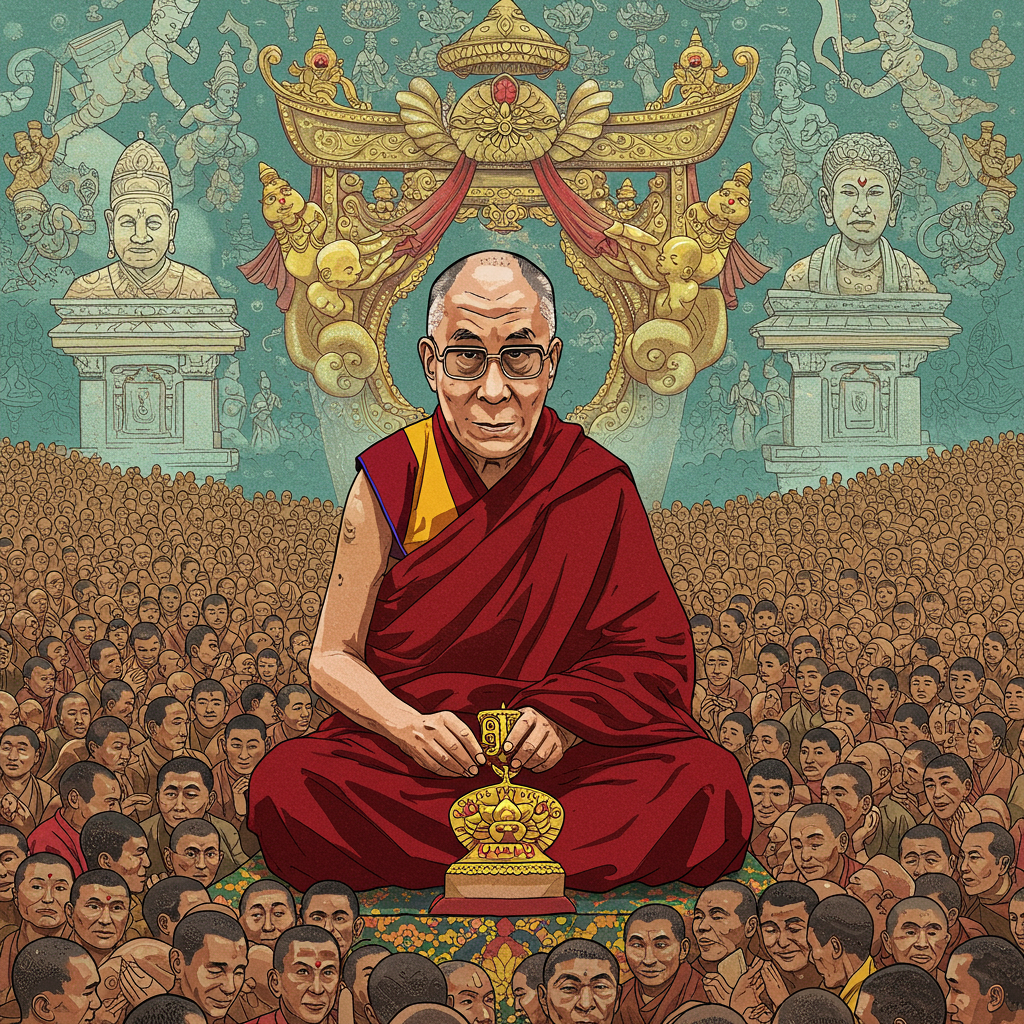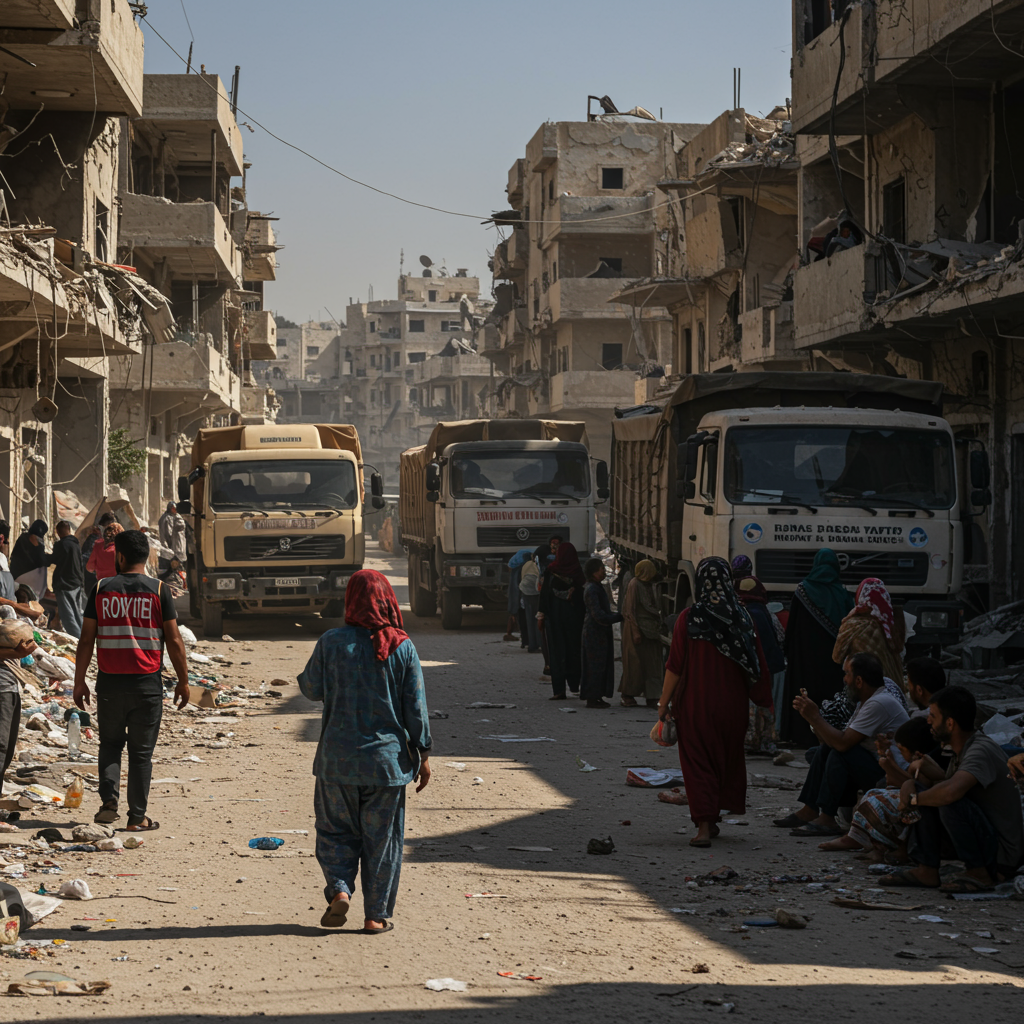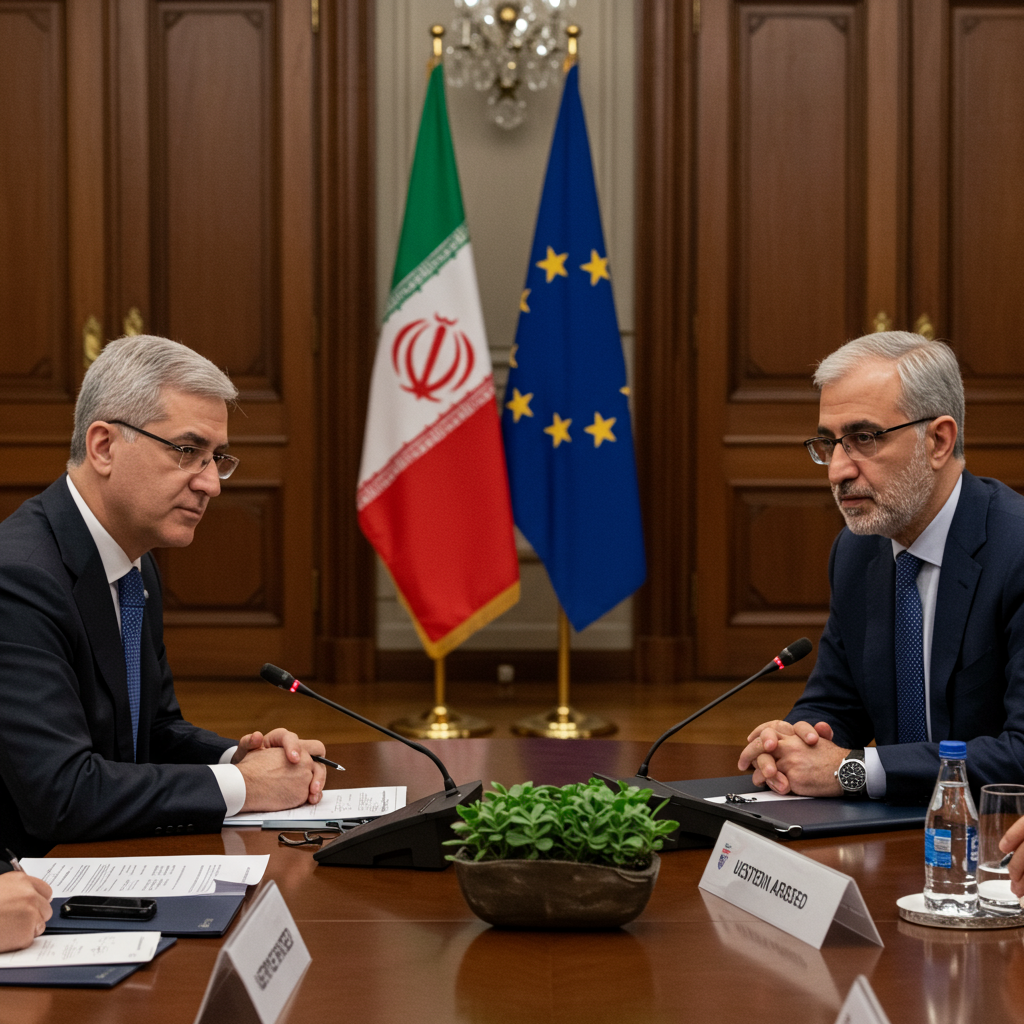Anticipation is building in the mountainous northern Indian town of Dharamsala. Hundreds of followers have gathered, not just to celebrate a significant milestone, but to witness a potentially historic moment. The spiritual leader of tibetan Buddhism, the 14th dalai Lama, is marking his 90th year. This milestone birthday is unfolding amidst growing expectations that he will offer vital clarity on the future of his revered institution.
Celebrations began on Monday, marking the Dalai Lama’s birthday according to the Tibetan lunar calendar. The official date is Sunday, July 6, 2025. More than 7,000 guests are expected to attend the events, including Indian ministers and prominent supporters like actor Richard Gere. This week also features the 15th Tibetan Religious Conference. This three-day gathering of Buddhist leaders commenced on Wednesday morning.
Hinting at the Future of the Spiritual Lineage
The question of who will succeed the Dalai Lama is perhaps the most critical facing Tibetans and their global movement. His office confirmed to the BBC that a video message and a written statement are scheduled for release on Wednesday, July 2nd. While the exact content remains unconfirmed, many hope it will shed light on the succession process.
Speaking to a gathering on Monday, the Dalai Lama himself addressed the matter directly. He stated, “there will be some kind of a framework within which we can talk about the continuation of the institution of the Dalai Lamas.” He did not elaborate further at the time. However, this confirmation of a forthcoming “framework” is highly significant.
Over the years, the Nobel Peace Prize laureate has offered varied perspectives on his succession. He has sometimes suggested the institution might not continue at all. At other times, he’s mused about a potential female successor. More recently, he has consistently emphasized that the decision for the institution’s continuation ultimately rests with the Tibetan people. If they wish it to continue, his office, specifically the Gaden Phodrang Trust established in 2015, would be responsible for the recognition process.
A Modern Approach to an Ancient Tradition
Tibetan Buddhist tradition holds a unique belief about the succession of high lamas like the Dalai Lama. It’s not a direct appointment but rather a process of identifying the reincarnation of the predecessor. Senior monks typically undertake a search after the passing of the current Dalai Lama. This mystical search traditionally involves interpreting dreams, visions, and omens. Pilgrimages to sacred sites and the identification of specific artefacts belonging to the previous incarnation are also key elements.
The current 14th Dalai Lama, born Lhamo Dhondub in a small Tibetan village, was himself identified as the reincarnation at the tender age of two in 1937. A search party recognized him based on signs and his ability to correctly identify possessions of the 13th Dalai Lama. He was enthroned before his fourth birthday.
However, the current Dalai Lama appears to be “rewriting the script” for his succession. His goal is to mitigate potential leadership vacuums and, crucially, to counter anticipated interference from Beijing. He has hinted at several potential deviations from tradition. These include the possibility of transferring his spiritual essence to another person while he is still alive. He has also suggested a successor could be an adult, not necessarily an infant.
Insisting on Freedom: Born Outside china
Perhaps the most consistent and politically charged element of the Dalai Lama’s recent statements is his insistence that his successor will be born outside of Chinese-controlled Tibet. He has specifically mentioned the possibility of reincarnation occurring among the approximately 140,000 Tibetan exiles, many living in India.
In his autobiography, he explained his reasoning. The purpose of a reincarnation, he wrote, is to continue the predecessor’s work. This necessitates birth in the “free world.” This stance directly challenges Beijing’s narrative and claims of authority over Tibetan religious affairs. Tibetan officials in exile also stress the desire for the next incarnation to be born free. They argue this is essential for the survival of Tibetan culture, religion, and nation.
The traditional search process can take years. The Dalai Lama’s proactive approach aims to provide a framework that prevents a prolonged leadership vacuum. This is seen as a strategic move to preserve the continuity of the institution against external pressures.
China’s Determined Interference
The issue of the Dalai Lama’s succession is not merely a religious matter. It is deeply intertwined with the complex political relationship between Tibet and China. The Dalai Lama fled Tibet in 1959 following a failed uprising against Chinese rule. He established a government-in-exile in Dharamsala. For many Tibetans, he represents an alternative source of power and hope.
Beijing views the Dalai Lama with suspicion, labeling him a separatist. China asserts that living standards in Tibet have significantly improved under its rule. Despite the Dalai Lama’s advocacy for a “middle way” – genuine self-rule within China – Beijing maintains tight control over the region.
Experts widely anticipate that China will attempt to impose its own candidate as the next Dalai Lama. Professor Dibyesh Anand of the University of Westminster states that China will argue the Communist Party has the sole authority to find the reincarnation. He expects Beijing to identify a young boy to install as their chosen Dalai Lama after a period of time. This would mirror China’s actions in 1995. In that year, Beijing detained the six-year-old boy recognized by the Dalai Lama as the reincarnation of the Panchen Lama (the second-highest figure) and installed its own candidate. The original boy has not been seen since.
The Fight for Legitimacy
Despite China’s anticipated interference, Tibetan exile representatives express confidence that a Beijing-appointed Dalai Lama would lack legitimacy. Youdon Aukatsang, an MP in the Tibetan parliament-in-exile, believes China has failed to control the “hearts and minds” of Tibetans inside Tibet. He argues a Chinese-chosen Dalai Lama would not be recognized by Tibetans or the world. Tenzin Lekshay, spokesperson for the government-in-exile, emphasizes that the concept is about reincarnation, not succession, and tradition must be followed authentically.
Tibetan officials acknowledge concern about China’s actions. However, they are determined to continue the institution. They view the Dalai Lama institution as vital for the Tibetan struggle, a symbol of identity, and a beacon of spiritual refuge. Dolma Tsering Teykhang, another Tibetan MP, states China is trying to “grab this institution” for political reasons.
The Chief State Oracle of Tibet, Thupten Ngodup, notes that discussions about reincarnation typically wouldn’t occur during a lama’s lifetime. However, China’s interference necessitates the current proactive approach.
A Life in Exile
The current Dalai Lama’s life is inextricably linked to the modern history of Tibet. He was identified as the 14th reincarnation at age two and enthroned before four. He received a traditional Buddhist education. However, his peaceful life was disrupted when he was just 15. In 1950, troops of Mao Zedong’s new Communist government marched into Tibet. A year later, China drafted a 17-point agreement formalizing Tibet’s incorporation.
A widespread Tibetan revolt in 1959 was brutally crushed. Thousands of protesters were killed. The 15-year-old Dalai Lama fled on foot across the treacherous Himalayas to India, accompanied by some 10,000 followers. He settled in Dharamsala, which became the seat of the Tibetan government-in-exile.
In a significant move in 2011, the Dalai Lama transferred his political authority to a democratically elected leader. This ended the 368-year tradition of the Dalai Lama holding both spiritual and temporal power. This decision is seen as preparing the Tibetan people for a future without him as a political figure, allowing them to continue their movement.
Enduring Hope for Home
Amidst the political and spiritual complexities, the personal stories of Tibetans in exile highlight the enduring connection to their homeland. Lobsang Choedon, 84, who fled with the Dalai Lama, still holds onto the hope of returning to Tibet one day. “My faith is that I will return,” she says, “If not me, my younger generations will definitely return.”
Her grandson, Ngawang Lhundup, 15, born and raised in India, feels a deep connection to the ancestral land through stories. He would consider visiting even under Chinese rule. However, the dream remains returning to a free Tibet.
The uncertainty surrounding the succession casts a long shadow. The present Dalai Lama is seen as a unifying force. Some Tibetans worry about the impact of his passing on the community and movement. They recognize the immense challenge of filling his role. MP Aukatsang notes, “We have very, very big shoes to fill.” He suggests many people will need to contribute, not just one successor.
The coming days, particularly the release of the Dalai Lama’s statement on Wednesday, are keenly awaited. His words may provide a clearer path forward. They could offer hope and direction to a people navigating exile, political oppression, and the vital need to preserve their unique identity and spiritual heritage.
Frequently Asked Questions
What significant announcement is expected from the Dalai Lama around his 90th birthday?
The Dalai Lama has indicated he will release a statement and video message on Wednesday, July 2nd, providing a “framework” for the continuation of the institution of the Dalai Lamas. This is anticipated to shed light on his plans or guidance regarding the process for identifying his successor, which is traditionally understood as his reincarnation. The announcement comes as he celebrates his 90th birthday milestone.
Why is the Dalai Lama’s succession a point of conflict with China?
China, which controls Tibet, views the Dalai Lama as a separatist and claims authority over Tibetan religious affairs, including the selection of high lamas’ reincarnations. The Dalai Lama insists his successor must be born outside China, in the “free world,” to preserve the lineage’s autonomy. Beijing is expected to name its own candidate, which Tibetans in exile vow to reject, creating a fundamental dispute over legitimacy and control.
How does Tibetan Buddhist tradition explain the selection of a Dalai Lama?
Tibetan Buddhists believe that enlightened spiritual leaders like the Dalai Lama are reborn through reincarnation to continue their work. After a Dalai Lama passes away, senior monks engage in a search process involving interpreting signs, dreams, and omens. They visit sacred sites and test potential candidates by having them identify possessions of the previous Dalai Lama. The current 14th Dalai Lama was himself identified at age two based on these traditional methods.




